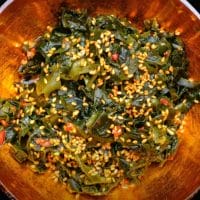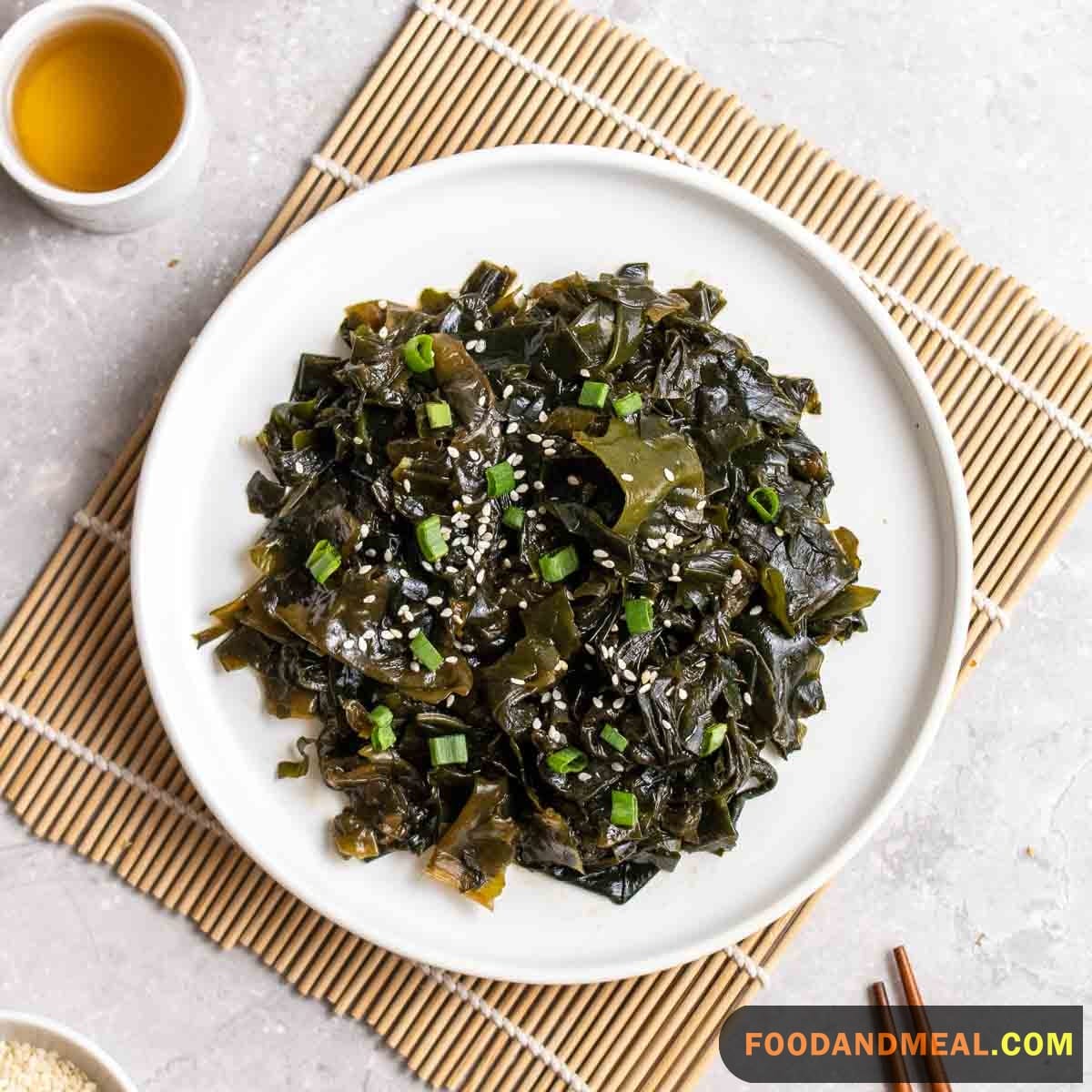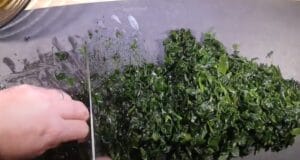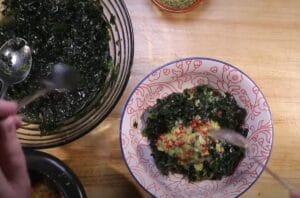Discover the secrets of authentic Japanese cuisine with our step-by-step guide on how to make Japanese seaweed salad, a refreshing and healthy dish
As a food blogger at Food And Meal, I often find inspiration from my personal life when coming up with new recipes to share. Lately I’ve been feeling a bit homesick, reminiscing about my childhood days spent at my grandmother’s house. Some of my fondest memories are of helping her in the kitchen, especially when she would make her signature Japanese Seaweed Salad.
That tangy, umami flavor sparked nostalgia, transporting me back to simpler times. I could vividly remember sitting at her table, the late afternoon sun streaming in through the windows as we enjoyed our wakame seaweed salad over light conversation and laughter. It never failed to lift my spirits.
Now as an adult living far from my hometown, I’ve been missing my grandmother’s comforting presence and her delicious home cooking. In an effort to recapture some of that magic, I decided to try my hand at recreating her famous Japanese Seaweed Salad recipe to share with my readers. It was a therapeutic process, allowing me to thoughtfully reflect on cherished memories while finding peace through cooking.
The final result was better than I could have imagined. With each bite, it feels like my grandma is right there with me again. I can’t wait for you all to experience the magic of this salad too – I know it will brighten your day just like it does mine! I hope this recipe brings you joy and maybe even stirs up some happy memories of your own.
How to make Japanese Seaweed Salad
If you’ve ever had sushi, you’ve probably seen seaweed salad on the menu. It’s one of the most healthy and delicious dishes you can eat. It can also be very quick to make. Dried Wakame seaweed is a great choice. It rehydrates quickly in water and is easy to find at Japanese grocery stores. You can also buy it online. It comes in a big bunch and is the best kind to use for salads. This recipe calls for soy sauce, which is a key flavor component of the dressing. You can use a gluten-free or low-soy sauce instead if you’d like.


Seaweed ( Wakame ) Salad
Equipment
Ingredients
- ½ cup dried salted wakame seaweed
- Kaiware radish sproutsh or garden cress for garnis, optional
- Toasted white sesame seeds for garnish
Instructions
- Rinse the wakame under running water. Squeeze and soak in a bowl of water for 2-3 minutes.

- Squeeze again and drop into a sieve submerged in a pot of hot water to blanch (about 2 seconds).

- Lift the wakame out of the hot water and immediately pour cold water over it to cool it down quickly. Squeeze out the water. Slice the wakame thinly. Set it aside.

- Whisk together the ingredients for the dressing in a bowl until the sugar is dissolved. Pour the dressing over the wakame salad. Add sesame seeds to taste. Mix well.

- Top with radish sprouts or garden cress, if desired. Mix the dressing again and drizzle it over the salad.

Video
Notes
Nutrition
© Food And Meal
This website provides approximate nutrition information for convenience and as a courtesy only. Nutrition data is gathered primarily from the Spoonacular Database, whenever available, or otherwise other online calculators.
Seaweed Salad with a Dehydrator
How to make japanese seaweed salad by a dehydrator ? One would typically start by selecting an edible seaweed variety such as wakame or nori. The wakame should be rinsed and soaked if it’s dried to rehydrate it and remove any excess salt.
Next, prepare a flavorful dressing. A combination of sesame oil, soy sauce, rice vinegar, a touch of honey or sugar for sweetness, and perhaps a hint of ginger and garlic can create an aromatic and gently tangy dressing that complements the sea-like flavor of the seaweed.
Once the wakame is ready, cut it into bite-sized pieces if necessary. Toss it gently with the dressing to coat evenly. At this point, you could add additional ingredients like thinly sliced cucumber, sesame seeds, or chili flakes for a bit of heat, depending on your personal preference.
To incorporate the dehydrator, lay the seasoned seaweed on the dehydrator trays in a single layer. Dehydrate at a low temperature until it reaches the desired crispiness, which can add an intriguing texture to the salad.
is seaweed salad healthy ?

Wakame Seaweed salad, a Japanese delicacy, has woven its way into the hearts of health-conscious individuals worldwide. Its rich tapestry of nutrients, including fiber, vitamins, and minerals like iron and iodine, is a testament to its growing popularity in Western diets. The versatility of seaweed, ranging from wakame to nori, brings not only a burst of oceanic flavors but also a treasure trove of health benefits. It’s said to bolster the immune system, support heart health, and even aid in weight control with its low-calorie profile.
Yet, as I reflect on the essence of this marine vegetable, it’s the balance that resonates with me. While it’s a beacon of nutrition, moderation is key due to its potent levels of iodine and vitamin K. Homemade versions, with their simple dressings and lack of additives, offer a purity that aligns with the quest for wholesome eating.
How long does seaweed salad last ?
Wakame salad, with its vibrant hues and tantalizing sesame dressing, is a delight that many of us cherish. When stored in the fridge, this culinary gem remains fresh for 3-4 days, ensuring that its crisp texture and oceanic zest are preserved. It’s a dance of flavors that one must savor promptly to capture its essence. The thought of it going past its prime, turning limp and losing its charm, evokes a sense of urgency to enjoy it while at its peak. There’s a certain tranquility in knowing that, when treated with care, Wakame seaweed salad can grace our tables with its freshness for those few precious days.
Tips for making Wakame Seaweed Salad

Cooking Tips
The key to a delightful seaweed salad lies in balancing textures and flavors.
Start with choosing the right type of seaweed—wakame is commonly used for its tender yet slightly crunchy texture. Before mixing it into the salad, rehydrate dried wakame in warm water, which will also remove any excess salt. After soaking, ensure you squeeze out the extra water gently to keep its delicate structure intact.
For the dressing, a combination of sesame oil, soy sauce, rice vinegar, and a touch of sugar creates an umami-rich flavor that complements the seaweed’s mineral taste. Adding thinly sliced cucumber and radish introduces a crisp freshness, while a sprinkle of sesame seeds adds a subtle nutty crunch, enhancing the overall experience.
When serving, present it chilled; this not only maintains the firmness of the wakame but also heightens the refreshing quality of the salad. It’s like a gentle sea breeze on a warm day—soothing and invigorating.
Serving Suggestions

This Japanese Seaweed Salad would pair nicely with some steamed rice cooked by best japanese rice cooker and miso soup on the side. For a heartier meal, you could serve it alongside some teriyaki chicken or grilled salmon. I also think it would make a lovely starter or side dish for a sushi night!
The tangy flavors of this salad would balance out richer dishes like katsu curry or tonkotsu ramen. For vegetarian options, it could accompany some gyoza dumplings or vegetable tempura.
I love to add extra texture by topping this salad with crispy wonton strips, toasted sesame seeds, or spicy fried tofu. You could also throw in some edamame, carrots, cucumbers, or avocado for extra color and crunch.
FAQs about Japanese Seaweed Salad

- What is Japanese seaweed salad made of?
- Japanese wakame salad typically includes wakame seaweed, sliced thinly and dressed with a mixture of soy sauce, sesame oil, mirin, and sugar. It may also feature toppings like sesame seeds or radish sprouts.
- Is Japanese seaweed salad healthy?
- Yes, Japanese wakame salad is generally considered healthy. Wakame is rich in nutrients and minerals, and the salad is low in calories. However, the overall healthiness can depend on specific ingredients and dressing used.
- What is the difference between Japanese and Korean seaweed salad?
- While both use seaweed, Japanese wakame salad often features wakame with a sweet and savory dressing. Korean seaweed salad, known as Miyeok Muchim, typically uses a different type of seaweed (miyeok) and may have a spicier flavor with ingredients like garlic and chili flakes.
- Is Japanese dried seaweed healthy?
- Yes, Japanese dried seaweed, like nori, kombu, or wakame, is considered healthy. It is a good source of vitamins, minerals, and iodine. However, moderation is key due to its high iodine content.
- Can I make Seaweed Salad in advance for a gathering?
- Yes, prepare components in advance, but toss them just before serving for freshness and crispness.
- Is it possible to store leftovers of Seaweed Salad?
- Store leftovers in an airtight container in the fridge for 1-2 days. Note that wakame may lose crispness over time.
- Can I use other types of seaweed for this salad?
- While wakame is common, you can experiment with seaweeds like kombu or hijiki for unique variations.
- Is Seaweed Salad suitable for vegetarians and vegans?
- Yes, by using plant-based soy sauce and mirin, Wakame Salad can be prepared in a vegetarian or vegan-friendly manner.
- Can I add seafood or tofu to this salad?
- Absolutely, adding shrimp, crab, or tofu can enhance the salad. Ensure to cook or prepare the protein separately before adding to the salad.
Conclution
In closing, I hope this how to make japanese seaweed salad guide helps nourish your body and soul the way it does for me. The combination of tangy, crunchy seaweed and bright, citrusy dressing is utterly addicting. I find that savoring each refreshing bite transports me back to simpler, happier times.
I’m so thankful I can continue my grandmother’s legacy by sharing this recipe with the Food And Meal community. If you end up making this salad at home, I’d love to hear about your experience over on the Food And Meal blog. Maybe this dish will stir up some comforting memories for you too.
Until next time, happy eating! Wishing you many tasty bites and beautiful moments around the dinner table.
I'm James F Anderson, a noted sous chef from London and a Le Cordon Bleu alumnus. My career began in a Michelin-starred Parisian eatery, where my blend of classic and contemporary cooking, using seasonal ingredients, earned accolades. Recognized in culinary publications and on cooking shows, I’m committed to mentoring aspiring chefs and delivering memorable dining experiences, marking me as a standout talent in the culinary world.






